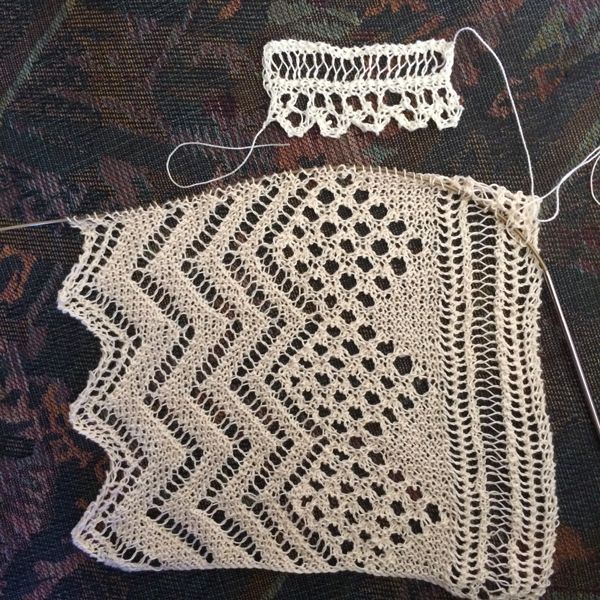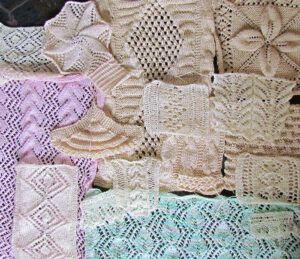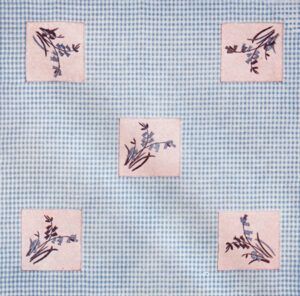I’m so close to finishing knitting the samples for the Ladies’ Guide to Elegant Lace Patterns Etc that victory is in sight at last! I just have one tidy (table runner thingy), one afghan (I’ll just be knitting a sample), and the fringe on another tidy to go.
At the moment I’m knitting the very last edging, which is actually the first edging from the book and one of the largest.
Here it is next to one of the smallest for scale.

Whilst it has you cast on 50 stitches and work 32 rows per repeat, it’s actually quite easy to knit because it has a lovely rhythm to it. This is a good thing because I still have another two repeats to go 😛
I’m not sure what I’ll be doing with all of my samples after I’ve finished blocking and photographing them for the website. I had planned to frame them but there are just too many. Perhaps some kind of archival book?
Any ideas?





